HOME www.tegels-uit-rotterdam.com
TILES FROM ROTTERDAM IN JOHN KNOX HOUSE, EDINBURGH
Published in GLAZED EXPRESSIONS
(TILES & ARCHITECTURAL CERAMICS SOCIETY)
Number 38 Spring 1999 (10-11)
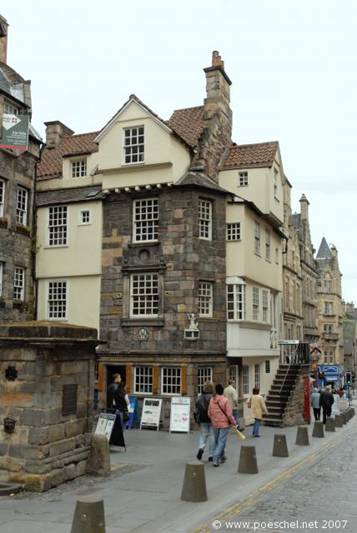
JOHN KNOX HOUSE
Foto: Schubert und Pöschel
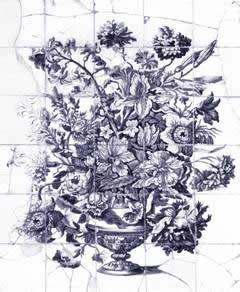
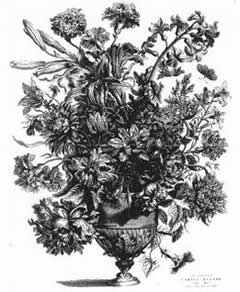
The Bloempot Factory Sign Engraving by Carel Allard
In 1994 I published ‘The Bloempot Factory Sign in Rotterdam’ in Glazed Expressions, No. 29.
The 18th century tin-glazed tile panel functioned as a factory sign on the facade of the Bloempot tile factory in Rotterdam.
The engraving of a vase with flowers made by the Amsterdam print maker Carel Allard served as the design source for the Bloempot tiled factory sign.
In ‘The Bloempot Factory Sign in Rotterdam’ I referred to three tile panels based on an engraving by Carel Allard (1648-1709) in a fireplace in John Knox House in Edinburgh.
What we see of John Knox House today is the work of Jarnes Mosman, goldsmith to Mary Queen of Scots. During the siege of Edinburgh Castle the Protestant reformer, John Knox (1514-72) is supposed to have taken refuge in the house and spent the last few months of his life there.
John Knox House is a jewel in Edinburgh's historic crown and a precious survivor of the late medieval period. The house consists of two combined late medieval town houses with rooms and several floors, oak panelling, floors, an early seventeenth century painted ceiling and several fireplaces with Dutch tiles made in Rotterdam during the late 18th or early 19th centuries.
First floor
The fireplace on the first floor has three tile panels showing vases with flowers painted in blue set within a tiled border with further ornamental tiles above and below. The oblong border tiles are known as 'Rozelintlijst' (1) and the square ornamental tiles as 'Kransveer' (2). The tile panels with flower vases on the left and the right are exact copies based on Carel Allard's engraving.
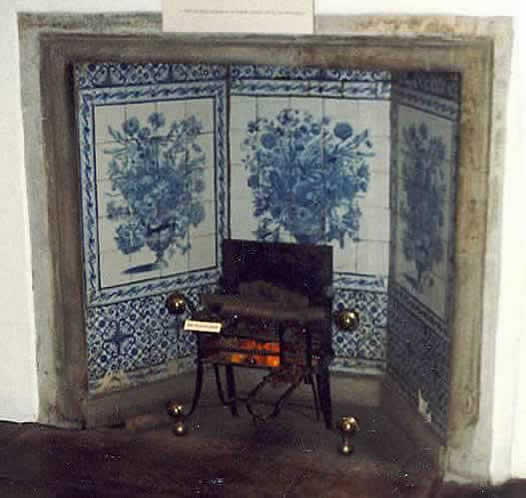
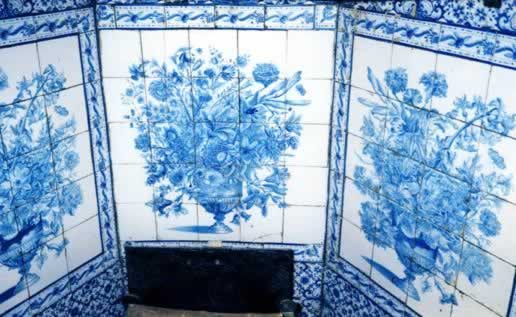
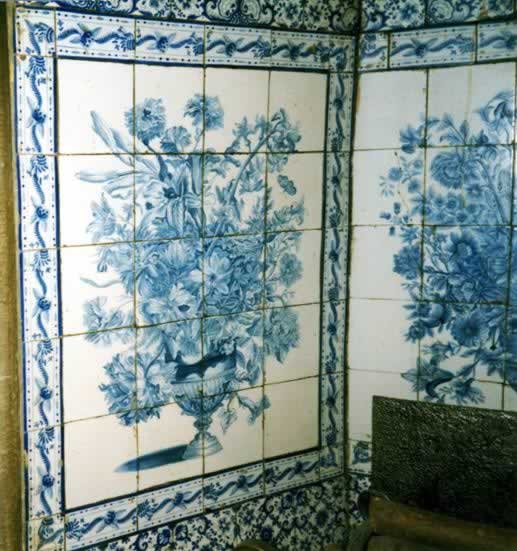

Second floor
On the second floor there are three fireplaces.
The fireplace in the gallery is decorated with a tile panel showing ‘The Last Supper' (3) painted in purple together with a selection of different tiles showing children's games, landscapes, biblical scenes, and animals executed in blue.
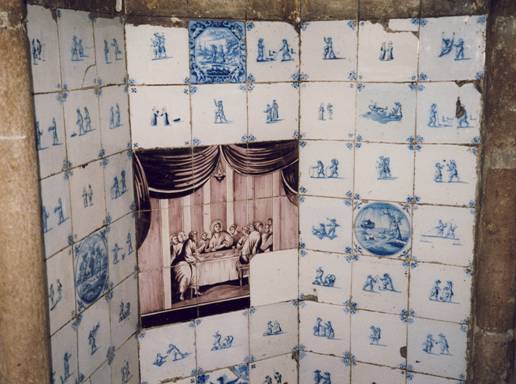
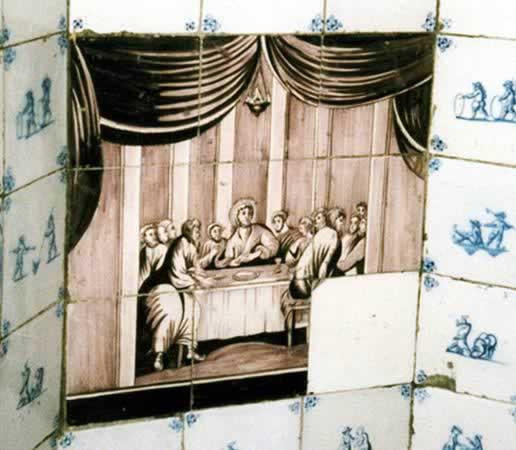
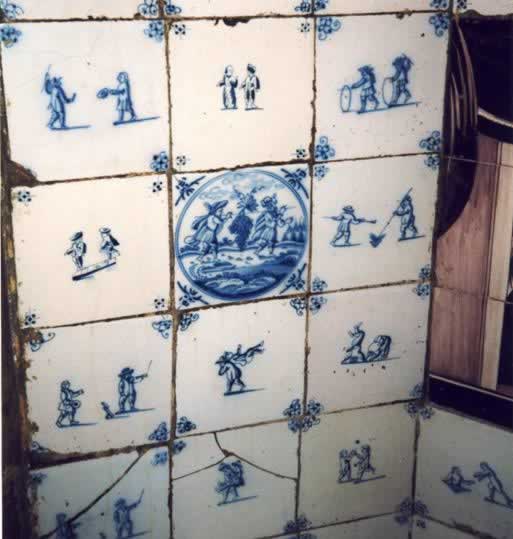
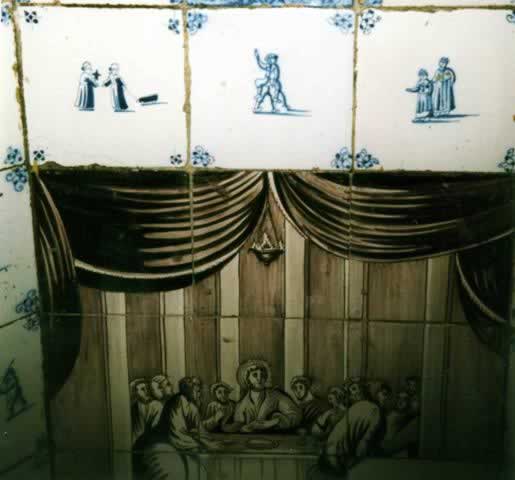
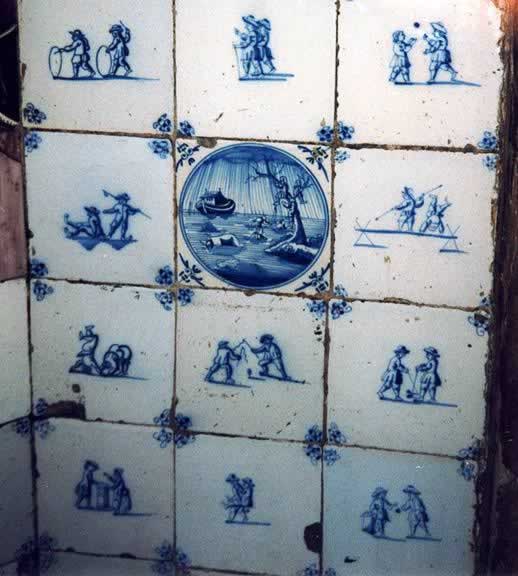
Please refer to the tile with two boys who beat a spinner.
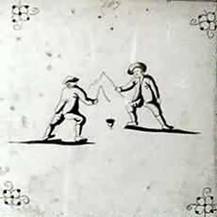
This motif is no. 60 of the Rotterdam ,Tegelbakkersgilde' pattern book, which is no. 3195 in the ,Gemeentearchief Rotterdam'. I published this pattern book as ‚EIN ROTTERDAMER VORLAGENBUCH FÜR FLIESEN IM BILD’.
A second fireplace on the second floor shows a panel in purple depicting a scene from the Old Testament in which Joseph (4) (5) is sold by his brothers. This is surrounded by tortoiseshell tiles and tiles showing landscapes and bits of left over tile panels.
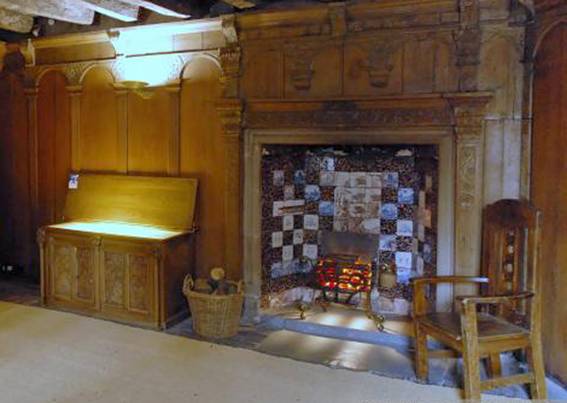
Foto: Schubert und Pöschel
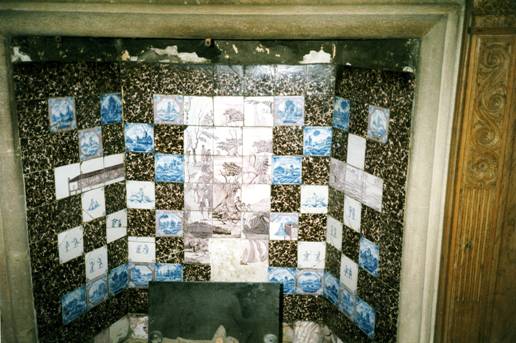

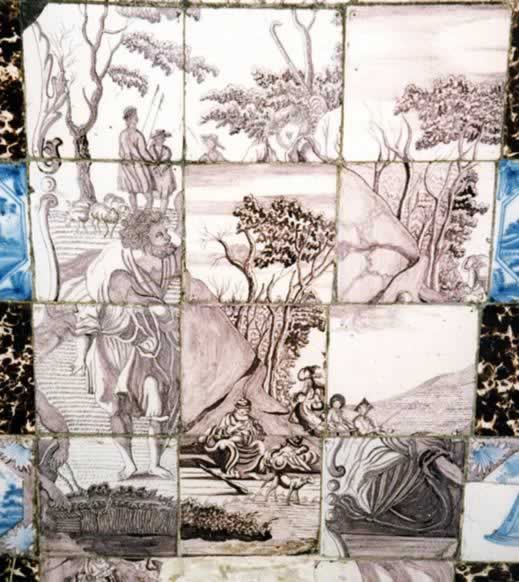
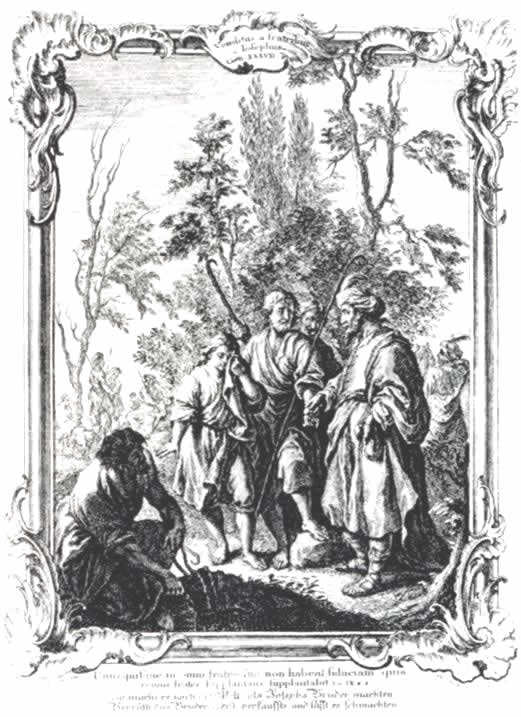
The engraving made by the print maker Kilian served as the design source for this tile panel.
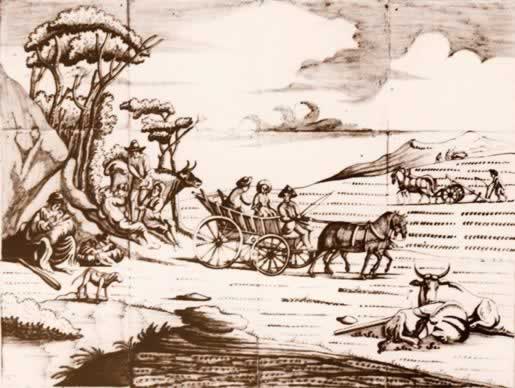
Tile panel in a private collection as a comparison
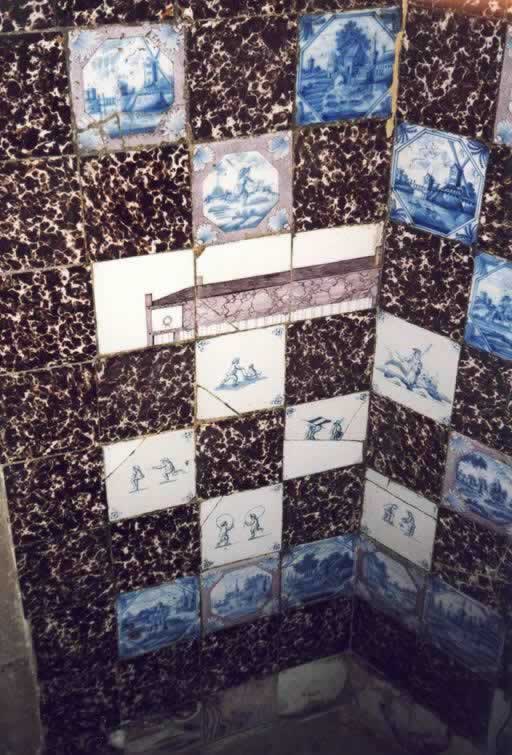
Left side
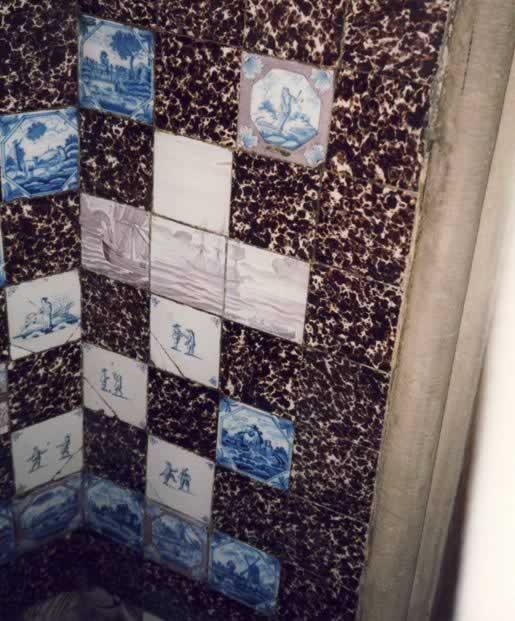
Right side
A third fireplace on the second floor has three religious tile panels painted in purple. Two show crucifixion 6) scenes while a third panel depicts a man carrying a child which I have managed to identify as representing S. Vincent de Paule 7) 8) (c. 1580-1660), a French priest who devoted his life to charitable work by ministering to galley slaves, poor people and abandoned children.
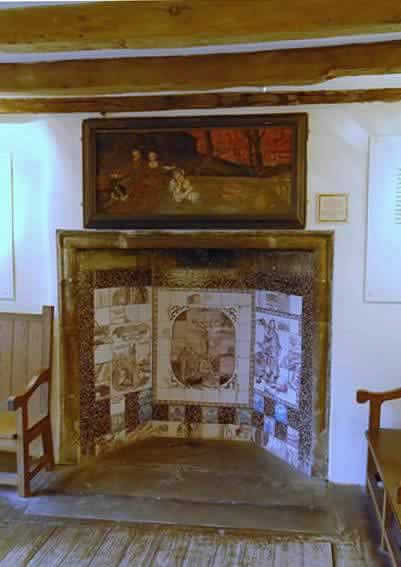
Foto: Schubert und Pöschel
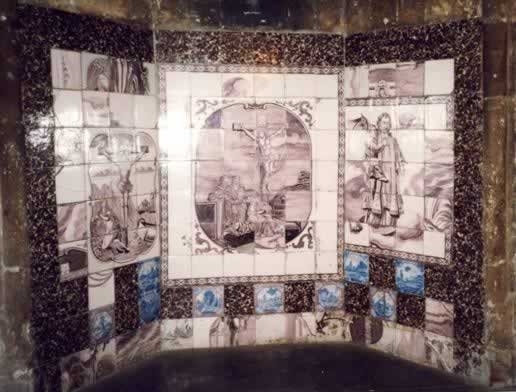
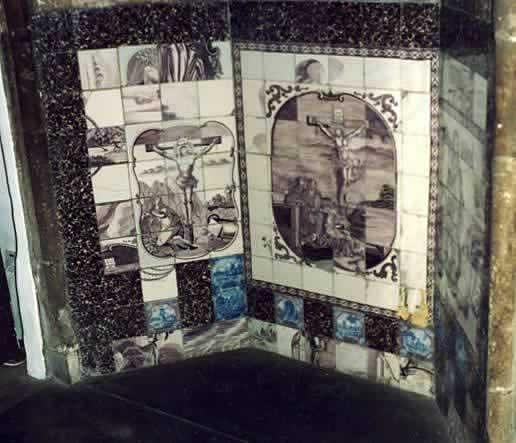
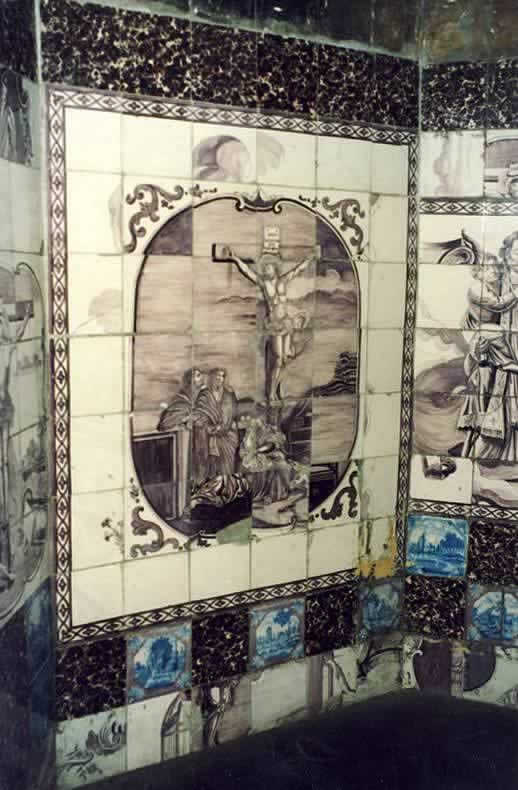
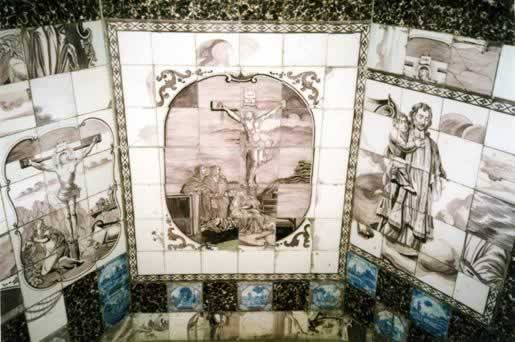
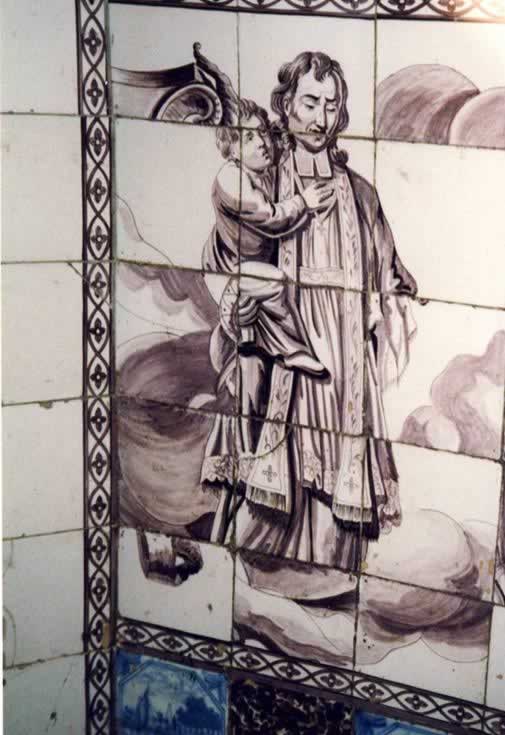
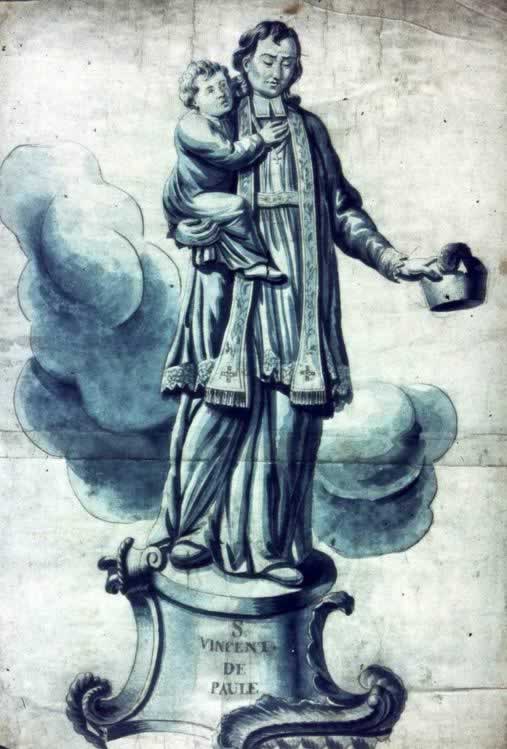
In the Municipal Archives in Rotterdam there is a watercolour painting as a design for this tile picture.
Inv. Nr. 3397, pricked, 82/56 cm (32,3/22,0 inch)
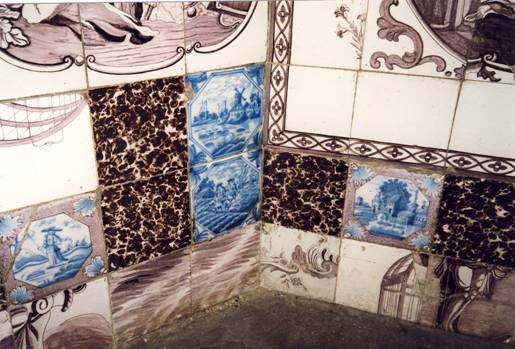
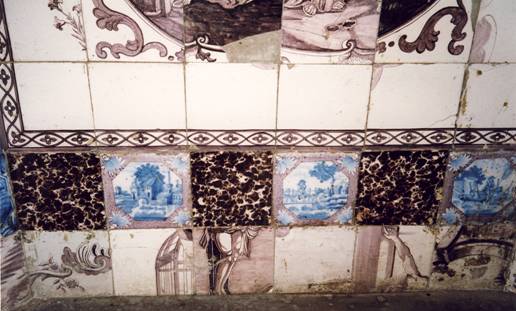
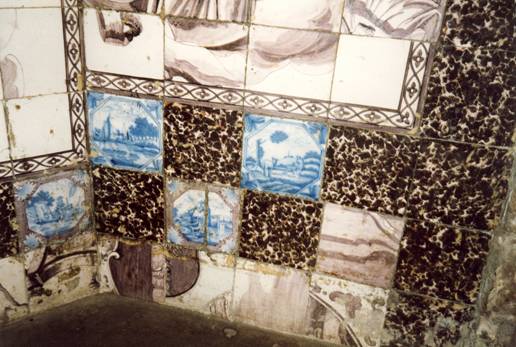
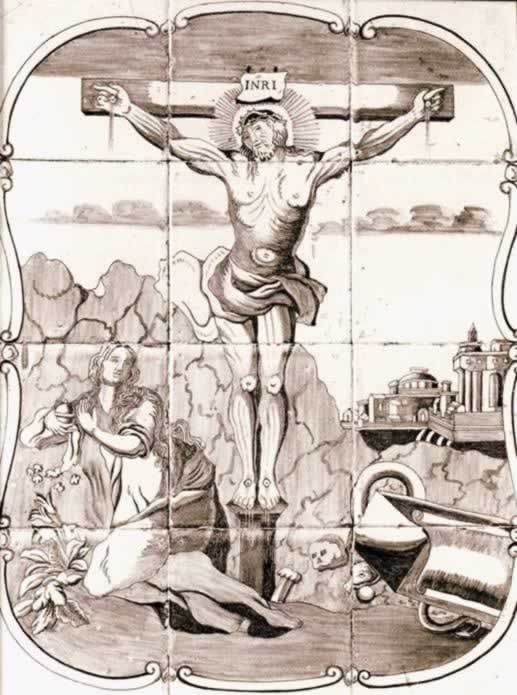
Tile panel in a private collection as a comparison
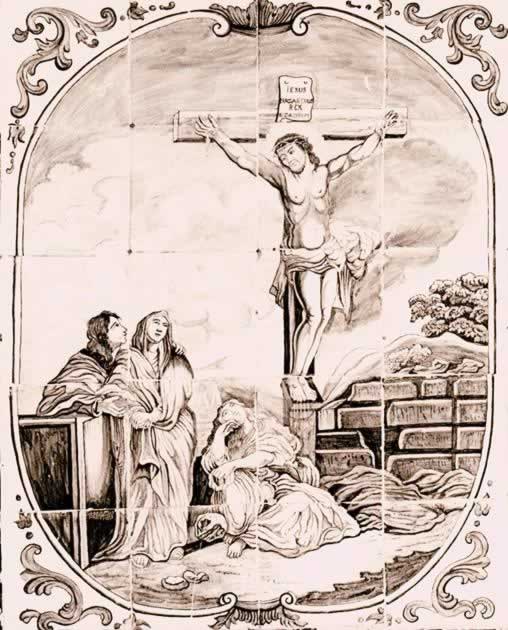
Tile panel in a private collection as a comparison
When the tiles were put into the fireplaces in John Knox House is less clear nor have I been able to ascertain why there is such an odd mixture of tiles and bits of left over panels. All we can say with certainty is that the panels and most of the single tiles were made in Rotterdam during the late 18th or early 19th centuries and must have found their way to John Knox House sometime there after.
Notes
1) Jan Pluis, The Dutch Tile Designs and Names A.01.05.80
2) Jan Pluis, The Dutch Tile Designs and Names A. 14.06.06
3) Jan Pluis, Bijbeltegels 1602. N 169
4) Jan Pluis, Bijbeltegels 200. O 64
5) Tile pictures in the stock lists of Van Traa at Rotterdam 1843, Jozeph 5/4, 7/4, 8/4, 9/5 (height/width)
6) Jan Pluis, Bijbeltegels, 1693. N 196 and 1696. N 197
7) Gemeentearchief Rotterdam inv. Nr. 3397 water-colour-painting in blue, pricked, 82/56 cm (32,3/22,0 inch)
8) Tile pictures in the stock lists of van Traa at Rotterdam 1844, St. Vincent de Paule 7/5 (height/width)
Thanks to
Chris Blanchett, Hans van Lemmen, Jan Pluis, Donald Smith, Director of John Knox House and poeschel.net for their help and advice.
Links
John Knox House, 43-45 High Street, GB-EH1 1SR Edinburgh
http://en.wikipedia.org/wiki/John_Knox_House
John Knox
http://en.wikipedia.org/wiki/John_Knox
Tiles and Architectural Ceramics Society (TACS)
http://www.tilesoc.org.uk/
Gemeentearchief Rotterdam
http://www.stadsarchief.rotterdam.nl